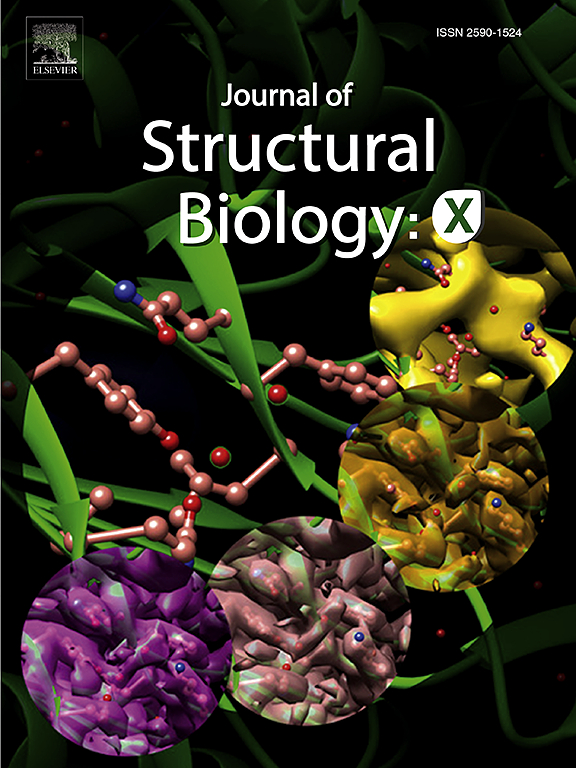GCTransNet: 3D mitochondrial instance segmentation based on Global Context Vision Transformers
IF 2.7
3区 生物学
Q3 BIOCHEMISTRY & MOLECULAR BIOLOGY
引用次数: 0
Abstract
Mitochondria are double membrane-bound organelles essential for generating energy in eukaryotic cells. Mitochondria can be readily visualized in 3D using Volume Electron Microscopy (vEM), and accurate image segmentation is vital for quantitative analysis of mitochondrial morphology and function. To address the challenge of segmenting small mitochondrial compartments in vEM images, we propose an automated mitochondrial segmentation method called GCTransNet. This method employs grayscale migration technology to preprocess images, effectively reducing intensity distribution differences across EM images. By utilizing 3D Global Context Vision Transformers (GC-ViT) combined with global context self-attention modules and local self-attention modules, GCTransNet precisely models long-range and short-range spatial interactions. The long-range interactions enable the model to capture the global structural relationships within the mitochondrial segmentation network, while the short-range interactions refine local details and boundaries. In our approach, the encoder of the 3D U-Net network, a classical multi-scale learning architecture that retains high-resolution features through skip connections and combines multi-scale features for precise segmentation, is replaced by a 3D GC-ViT. The GC-ViT leverages shifted window-based self-attention, capturing long-range dependencies and offering improved segmentation accuracy compared to traditional U-Net encoders. In the MitoEM mitochondrial segmentation challenge, GCTransNet achieved state-of-the-art results, demonstrating its superiority in automated mitochondrial segmentation. The code and its documentation are publicly available at https://github.com/GanLab123/GCTransNet.

GCTransNet:基于全局上下文视觉变换的3D线粒体实例分割。
线粒体是真核细胞中产生能量所必需的双膜结合细胞器。使用体积电子显微镜(vEM)可以很容易地在3D中可视化线粒体,准确的图像分割对于线粒体形态和功能的定量分析至关重要。为了解决在vEM图像中分割小线粒体区室的挑战,我们提出了一种称为GCTransNet的自动化线粒体分割方法。该方法采用灰度偏移技术对图像进行预处理,有效降低了EM图像间的强度分布差异。GCTransNet利用3D Global Context Vision transformer (GC-ViT),结合全局上下文自注意模块和局部自注意模块,精确建模远程和近程空间交互。远程相互作用使模型能够捕获线粒体分割网络中的全局结构关系,而短程相互作用则细化局部细节和边界。在我们的方法中,3D U-Net网络的编码器被3D GC-ViT取代,这是一种经典的多尺度学习架构,通过跳过连接保留高分辨率特征,并结合多尺度特征进行精确分割。与传统的U-Net编码器相比,GC-ViT利用了基于窗口的自注意力转移,捕获了远程依赖关系,并提供了更高的分割精度。在MitoEM线粒体分割挑战中,GCTransNet取得了最先进的结果,证明了其在自动化线粒体分割方面的优势。该代码及其文档可在https://github.com/GanLab123/GCTransNet上公开获取。
本文章由计算机程序翻译,如有差异,请以英文原文为准。
求助全文
约1分钟内获得全文
求助全文
来源期刊

Journal of structural biology
生物-生化与分子生物学
CiteScore
6.30
自引率
3.30%
发文量
88
审稿时长
65 days
期刊介绍:
Journal of Structural Biology (JSB) has an open access mirror journal, the Journal of Structural Biology: X (JSBX), sharing the same aims and scope, editorial team, submission system and rigorous peer review. Since both journals share the same editorial system, you may submit your manuscript via either journal homepage. You will be prompted during submission (and revision) to choose in which to publish your article. The editors and reviewers are not aware of the choice you made until the article has been published online. JSB and JSBX publish papers dealing with the structural analysis of living material at every level of organization by all methods that lead to an understanding of biological function in terms of molecular and supermolecular structure.
Techniques covered include:
• Light microscopy including confocal microscopy
• All types of electron microscopy
• X-ray diffraction
• Nuclear magnetic resonance
• Scanning force microscopy, scanning probe microscopy, and tunneling microscopy
• Digital image processing
• Computational insights into structure
 求助内容:
求助内容: 应助结果提醒方式:
应助结果提醒方式:


